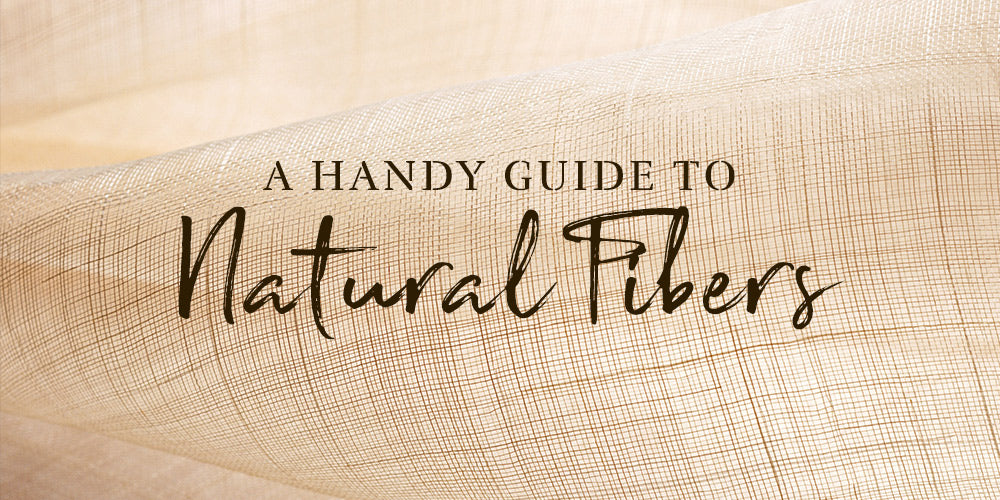
On Cultural Elements, we’ve talked extensively about the different fabrics that come from around the world. And if you shop the website, you’ll notice accessories and apparel made of all sorts of materials. To help you navigate the how and what of textiles, we’ve laid out this handy natural fiber guide.
What is a fiber?
A fiber is the most essential element of a textile. Fibers include any and all materials that can be spun or manipulated to create yarns. Yarns are the strands that are woven or knitted together to create fabric. Fibers can be natural or synthetic. For example, polyester, which is a synthetic fiber, is created from oil using chemical processes. Natural fibers, however, come from materials like plants and/or animals.
Here are some of the most common natural fibers you’re likely to come across.
Cotton

Perhaps the most well-known fiber, cotton comes from the hairs that protect the seeds of the cotton plant. Soft and fluffy, these hairs are picked, separated from the plant’s seed, and then spun in order to create yarns. Cotton production has been around for thousands of years. In fact, cotton bolls and fabrics scraps as old as 7000 BCE have been found in modern-day Mexico. Cotton creates a material that is naturally soft, breathable, and easy to wash, making it one of the most widely used fibers.
Hemp

Hemp fiber comes from the hairs that grow on the stem of the hemp plant. It is thought to be one of the first plants used for making textiles. Archeologists have found hemp samples in modern-day Iran that date all the way back to 8000 BCE. As far as the environment goes, hemp is one of the best: it uses less water than cotton, yields more crops, and needs no pesticides or herbicides. Hemp also cleans and rejuvenates the soil. As a fabric, hemp is durable and super strong. Similar to linen, hemp wrinkles easily but is excellent for wearing in the heat.
Silk

Naturally shiny and smooth as butter, silk comes from the cocoons of the Bombyx mori caterpillar. After the caterpillars spin their cocoons, they’re then boiled: this allows manufacturers to unwind the cocoons, which unravel in long filaments. No other natural fiber can rival the luster and luxury of silk. While silk is worn and prized all over the world, the cultivation of silkworms and the development of silk textiles dates back to ancient China. Silk is naturally strong and has a beautiful drape.
Wool

Wool fiber comes from animal fleece. To harvest wool, the animal’s fleece is shorn, cleaned, combed, and then spun to make yarns. You’re probably most familiar with sheep’s wool, but it also comes from rabbits, goats, camels, and alpaca. The type and species of animal chosen will affect the quality of the wool. Cashmere, for example, comes from a specific breed of goat. Wool is naturally elastic, and anyone who’s worn it is familiar with its insulating properties.
Flax

One of the oldest cultivated plants in human history, flax is used to make linen. The fibers are taken from inside the plant’s stem, a process that requires rotting the plant and stripping away the stem’s exterior. As a fabric, linen wrinkles easily, but its ability to absorb water quickly makes it the go-to material for warm weather. The oldest known garment in the world, an Egyptian blouse dating to 3500 BCE, is made of linen.

